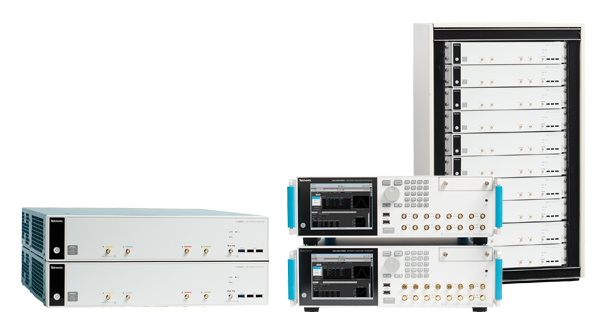Contact us
Call us at
Available 6:00 AM – 5:00 PM (PST) Business Days
Download
Download Manuals, Datasheets, Software and more:
Feedback
Precise Measurement of Single Shot Events
Photonic Doppler Velocimetry allows accurate velocity measurement of materials subjected to shock events. Initially developed to better understand the high energy physics related to explosive events, PDV analysis continues to evolve, with tremendous potential to advance research related to dynamic compression and shock physics.
The events that are analyzed with a PDV system are generally a “single shot” event. Often many laser channels are acquired, as well as other sensor types, to fully understand the response of the experiment. High signal fidelity acquisition on low amplitude signals is critical to the quality of the experiment results.
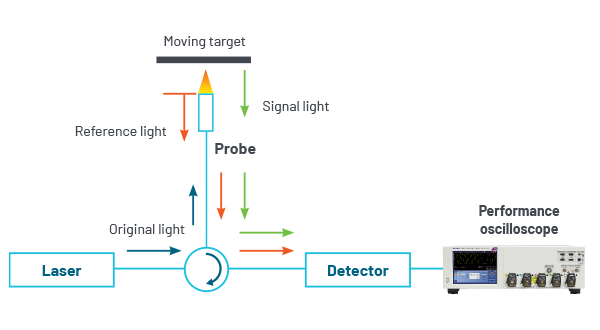
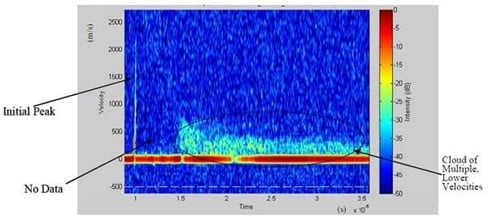
This photo was taken from an article titled “A view on the functioning mechanism of EBW detonators – part 2: bridgewire output” and is an example PDV trace for a bridgewire fired at all-fire voltage (copywrite E A Lee et al 2014 J. Phys: Conf. Ser. 500 05024)
Reliable Digitizer Solutions
PDV experiments are potentially very expensive, sometimes exceeding millions of dollars for a single shot, so a highly reliable signal acquisition system with outstanding signal fidelity is a paramount concern. Tektronix has a long history of providing excellent signal fidelity on single-shot acquisitions, with sample rate and bandwidth necessary to properly represent the sensed event. The DPO70000DX and DPO70000SX high performance oscilloscopes provide high channel count options, extremely accurate and stable acquisition timing, acquisition rates up to 200GS/s, bandwidths from 8 GHz to 70 GHz to support even the fastest gas gun experiments, and superior SNR (Signal Noise Ratio) to provide the best results in your high-speed event analysis.Specifications that Matter to You Most
PDV measurements can often be demanding in terms of signal fidelity, or how well an acquisition system can measure and accurately portray the sensor information. There are typically two primary figures of merit when it comes to describing how well an acquisition system is performing. The first is effective number of bits (ENOB), the measure of the real dynamic range of an analog-to-digital (ADC) and its associated circuitry, like pre-amps, track-and-holds, and relays in the signal path. ENOB takes into consideration signal degradation caused by noise and harmonic distortion, while the number of bits specified for an ADC alone is insufficient to tell the whole story. A second figure of merit is signal-to-noise ratio (SNR), a measure that compares the level of a desired signal to the level of background noise and is often expressed in decibels (dB). These two numbers are critical in understanding the performance required of acquisition systems to accurately capture and show the true signals in your PDV system.
For lower bandwidth requirements (≤8 GHz), the 5 Series MSO Low Profile oscilloscope (MSO58LP) and the 6 Series Low Profile Digitizer (LPD64) offer 12-bit ADC with an ENOB of 7.6 bits @ 1 GHz (velocity up to ~0.78 km/s - MSO58LP) or 5.1 bits @ 8 GHz (velocity up to ~6.2 km/s - LPD64). Low profile instruments fit into standard 2U rack space, allowing you to maximize channel density in an installation or portable rack.
For higher bandwidth requirements (> 8 GHz), the DPO70000SX performance oscilloscope delivers 8-bit ADC with and ENOB of 5.5 bits @ 20 GHz (velocity up to ~15.5 km/s).
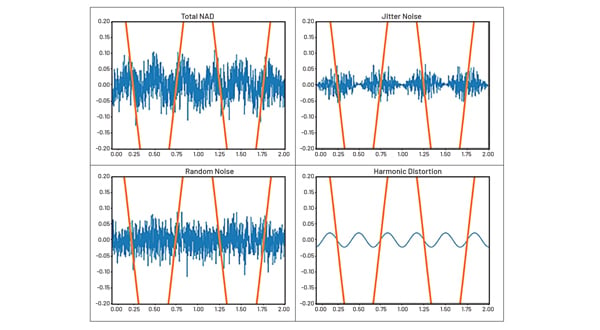
ENOB characterizes measurement uncertainty from all contributors in the system – Higher ENOB indicates higher SNR and accuracy.
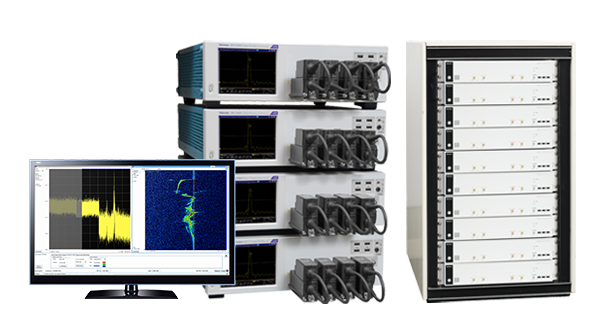
Small on Size, Not on Performance
Monitoring the PDV system to validate a critical shot can require hundreds of sensors and precision acquisition hardware. The 5 Series MSO Low Profile oscilloscope (MSO58LP) and 6 Series Low Profile digitizer (LPD64) offer the next generation of high performance 12-bit digitizers at up to 8 GHz. Using their high channel density in easy stackable rack mounts, one can achieve 100’s of synchronized channels. The higher performance DPO70000SX Low Profile oscilloscopes provide between 13 and 70 GHz of bandwidth and up to 200 GS/s sample rate to expand your Photonic Doppler Velocimetry or Broad Laser Ranging (BLR) system monitoring capability, while saving valuable space.
Unlock the Full Potential of Your PDV Testing
Discover the advanced capabilities of Tektronix's Photonic Doppler Velocimetry (PDV) solution.
- High-performance oscilloscopes and digitizers with high sample rates, low noise, and superior vertical resolution.
- Software that extends acquisition time, provides RF vs time traces, and enables high-resolution spectrograms for quick insights.
- Comprehensive service solutions to make sure your equipment operates reliably with minimal downtime.
